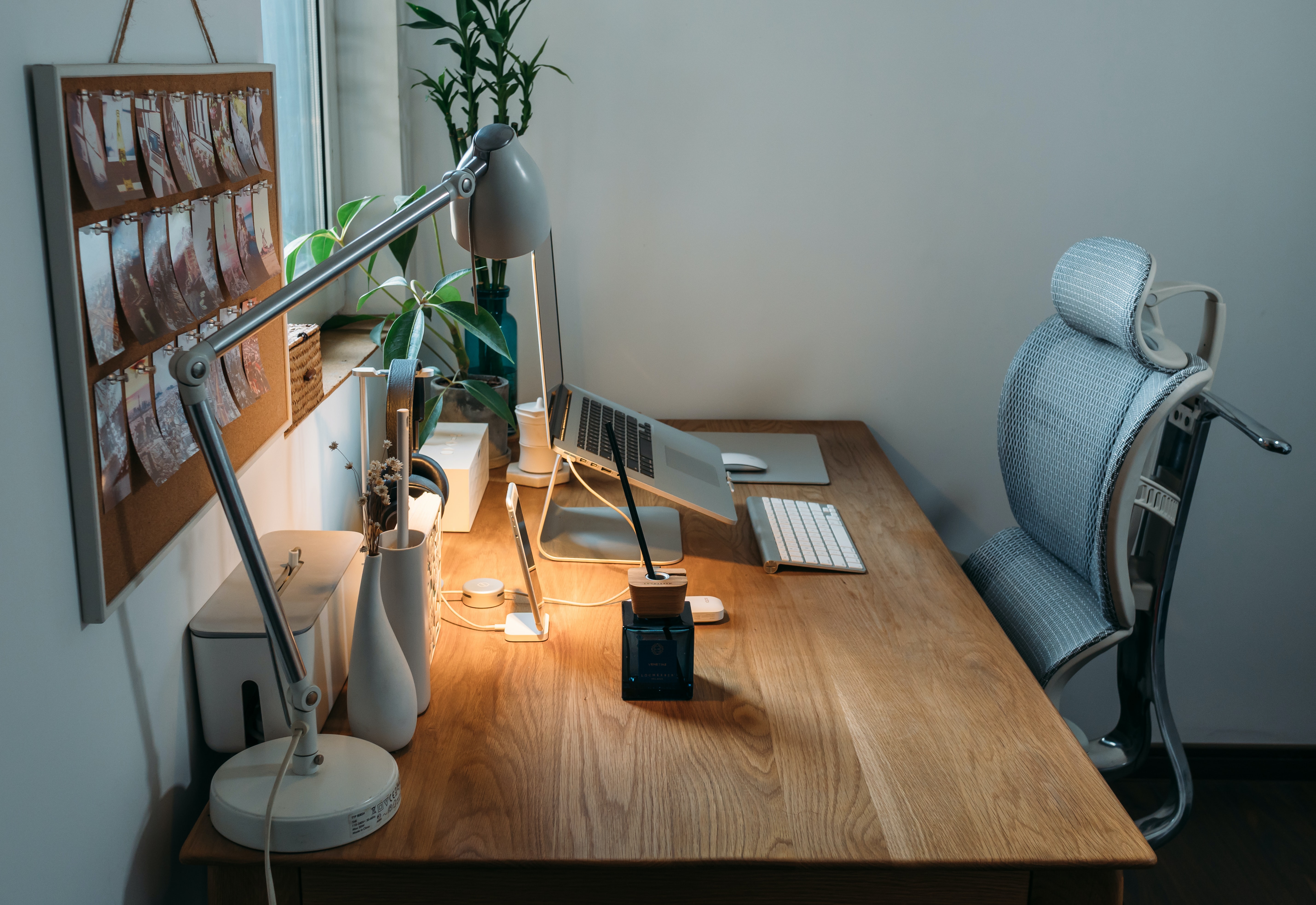
We know for a lot of our clients, switching to a home office set up over the pandemic has come with its challenges. We’ve heard clients say they’re working from their beds on laptops, slouchy couches and awkward furniture. This inevitably will lead to uncomfortable symptoms like postural strains, headaches, tendonitis, TMJ and increasing the risk of back injury and sciatica, to name a few.
This post is meant to help our clients working from home create a better ergonomic set up too offset for hours spent in front of a computer screen. It’s the small shifts we make that ultimately get our bodies into better shape. And we assure you, every little change can help! Read on for some ideas and suggestions to consider when you’re having a look at your home office set-up. Maybe even get inspired to make some changes!
_
First, it’s super helpful to know the basic rule of desk ergonomics. It’s all about being in a NEUTRAL position to take the stress off your joints and muscles over long periods of time. Your arms, wrists, head and neck should ALL be neutral. When viewing your monitor, your gaze should be at 2 inches from the top of your screen so you’re not looking down and straining the neck.
POSTURAL CHECK LIST:
- What is the position of my arms and wrists at my work area? Are my wrists extended back? Do I feel at ease and in a neutral position?
- Is my desk height too high or too low to be in a neutral position? How can this be adjusted?
- At what height is my laptop or monitor positioned compared to my gaze?
- Does my head and neck feel neutral or am I looking down too far?
- Is my body twisting in any way? Am I crossing my legs often? Do I lean to one side or rest on my elbows throughout the day?
- How could these positions effect my body and back over time?
Because desk work is quite sedentary, bringing attention to the dynamics of your set up will help you see some reasons why your feeling discomfort and straining symptoms throughout the day. Let’s have a look at how certain changes can get you more comfortable.
CHAIR HEIGHT
If your desk table area is too high or too low for you, it’s important to find a chair that can be height adjustable to get your arms and wrists into a better position of being neutral to avoid strain. Be sure to also have a look at what’s also going on with your feet as you want to be supported. You may wish to add a foot lift, a small pillow or rolled up towel for example, to get you set for a long computer session.
IMPORTANT CHAIR TIPS :
- Be sure that when you’re seated, your office chair has the ability to slightly recline while providing lumbar support, similar to the position of a car seat. Sitting upright over many hours is quite straining to the upper back and it’s almost impossible to hold good posture throughout the day. Ergonomically, this is a more neutral and resting position for your back to be in for longer stretches of sitting time.
USEING PROPS
- If you’re not able to use an adjustable office chair with lumbar support, you can look at trying some hacks such as adding a small pillow or a rolled up towel across the lower back and mid spine to provide lumbar and thoracic support when you lean back and recline. Do some tests and see if you find a better position for yourself.
- Use a small foot stool or yoga blocks under your desk so you can extend your legs, opening and stretching the hamstrings on and off throughout the day. This will help with low back tension symptoms.
- Utilize books or boxes to adjust your screen height to get a neutral position for your head and neck when viewing your monitor
- If using a standing desk, place a bench or a chair behind you. This way you can extend one leg back while resting on the knee. Then switch to the opposite, mixing up your standing posture equally while intentionally moving your body to stay active while you work.
INVESTING IN YOUR WORK SPACE
If you’re working from home because of the pandemic, it could be some time before your back in an office setting. It’s worth it to invest in some equipment that will make you more comfortable. Make this work situation work for you!
OFFICE EQUIPMENT SUGGESTIONS:
- an adjustable desk chair with lumbar support and reclining position
- a separate keyboard and mouse to your laptop so you can properly adjust the height of your workspace
- create a standing desk option though a lift and lower station (you can also create a makeshift standing desk with books or boxes if you’re crafty!)
_
Okay! So those are some great tips for your desk set-up. Now, lets talk about how to keep your body moving while you punch the work clock from home.
BREAK TIMES
One of the great things about working from home, is the amount of breaks you can take without judgment! Every 30 minutes to an hour, you should be standing up to do some mobility exercises, getting the circulation flowing and moving your joints to help avoid repetitive strains. Plus, this can help for focus and productivity. Give yourself space to decompress before getting back into a work groove – think of it essential self-care while on the job.
Here are some quick and easy exercise ideas to integrate into your work day to help offset the effects of sitting, getting your body moving and to help reset your posture:
- stretch your hamstrings by lifting one leg up on a chair while standing on the other and gently press forward to increase the stretch. Repeat on both sides!
- 10-15 squats or jumping jacks
- 10-15 rear flies by hinging forward slightly at the hip, extend your arms out to the side and then squeeze your shoulder blades back and together to wake up and strengthen the postural muscles
- Hydrate by drinking a cup of a water each hour
- lift both arms up to 90 degrees and then rotate the body side to side to mobilize the spine
- bend forward at the hips and cross your arms in front of the body, then slowly lift up, starting at the base of the spine, moving up to fully standing
- Do the downward dog yoga pose and walk out the back of the legs as you do
- Open the chest by doing cactus arms and stretching forward in a doorway for 15 seconds
- Stretch the neck by side bending your ear towards the shoulder, holding for 15 seconds and stretching both sides
We hope this helps and by adding a maintenance massage once a month to keep things in check is a great way to stay in a good flow!
See you soon,
T/H Crew
Got any advice tor changes you made at home the really helped your at home office set up? We’d love for you to share with others in the comment section below!


